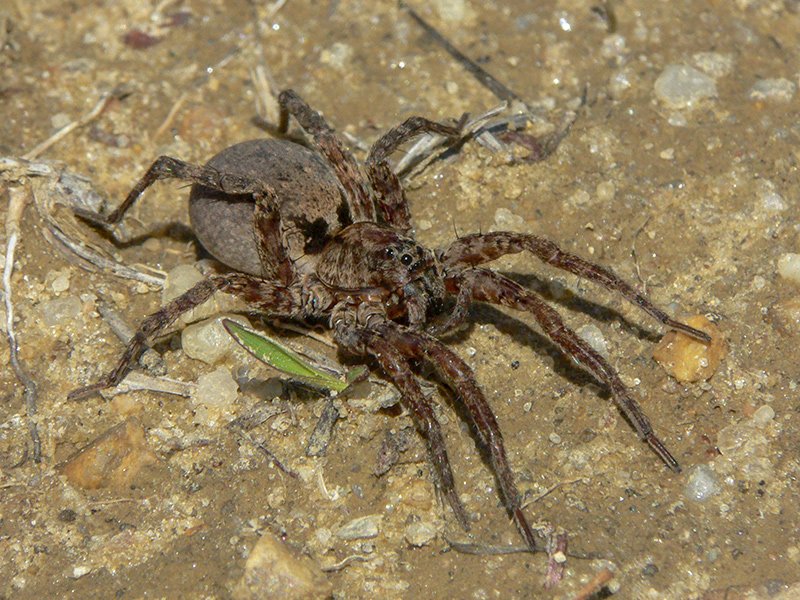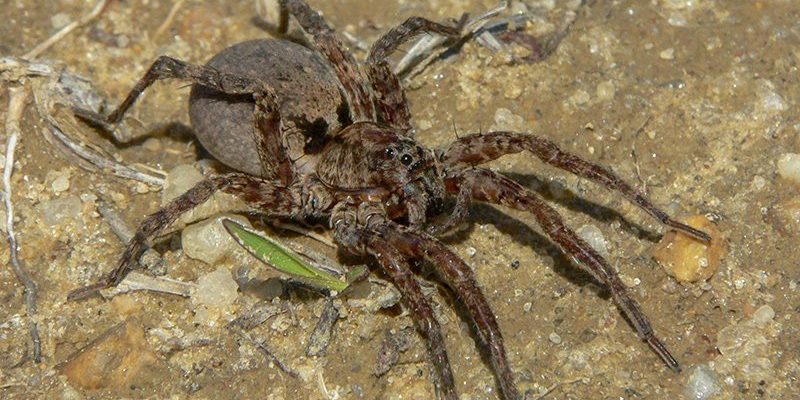
Have you ever watched a spider spin its web and thought, “How do they do that?” Spiders are incredibly fascinating creatures that play vital roles in our ecosystems. They are not just creepy crawlies lurking in dark corners; they are intricate artists of nature, weaving webs and hunting with impressive skills. With over 45,000 species of spiders identified so far, there’s so much to explore about these eight-legged wonders.
In this article, we’ll delve into the world of spiders—where they live, what they eat, their behaviors, and even their unexpected friendships. Whether you’re curious about why a spider is spinning a web in your garden or why some are considered dangerous, you’re in the right place. Think of this journey as an invitation to open your eyes to the remarkable life of spiders, much like peeking into a hidden world filled with surprises.
What is a Spider?
A spider is an arachnid, part of a diverse family that includes scorpions, ticks, and mites. Unlike insects, which have six legs, spiders have eight. They come in various sizes, colors, and shapes, from the tiny jumping spider to the large and hairy tarantula. Most spiders are not dangerous, yet they often evoke fear and fascination due to their unique appearance and behaviors.
Spiders are primarily known for their silk production. This silk is used for various purposes, such as building webs for catching prey, creating shelters, and even wrapping their eggs. Each species has its own style of silk and web construction, which reflects their adaptability and evolutionary innovation.
One of the most interesting aspects of spiders is their predatory nature. They are primarily carnivorous, feeding on insects and sometimes other small animals. By preying on pest species, spiders play a crucial role in keeping our ecosystems balanced and healthy. So, instead of fearing them, maybe we should appreciate them for their contributions!
Spider Anatomy
The anatomy of a spider is as intriguing as the creature itself. Spiders have two main body parts: the cephalothorax (which combines the head and thorax) and the abdomen. The cephalothorax houses the eyes, mouth, and legs, while the abdomen contains vital organs and the spinnerets (the silk-spinning glands).
Spiders possess specialized mouthparts called chelicerae, which are used to inject venom into their prey. This venom can be harmless or highly toxic, depending on the species. Despite their fearsome reputation, most spider bites are harmless to humans and can feel similar to a bee sting.
Another fascinating feature of spiders is their eyes. Most spiders have eight eyes, but the number can vary. Some have excellent vision, which helps them hunt and navigate their environment, while others rely more on their webs and feelers to detect movement.
Spider Habitat
Spiders can be found in nearly every habitat on Earth, from gardens and forests to deserts and caves. They thrive in environments that provide shelter and access to food—mostly insects. While some prefer the wet conditions of rainforests, others are well-adapted to arid climates.
Many spiders construct webs as homes, but not all do. Some, like the wolf spider, are more active hunters and don’t rely on webs. They can be seen prowling the ground or climbing plants in search of food. This adaptability allows spiders to occupy a wide range of habitats, making them resilient creatures.
Urban areas are also home to various spider species. You might find them in gardens, garages, or even inside your home. They can be beneficial in these settings by controlling pests. So, the next time you encounter a spider, consider its contribution to your local ecosystem!
Spider Diet
When it comes to diet, spiders are primarily carnivorous. Most feed on insects, but some larger species can consume small vertebrates like frogs or birds. They use their webs or hunting skills to catch prey. Once they capture their meal, they inject it with venom to immobilize it, then digest it externally before consuming the liquefied insides.
Spiders are expert hunters. Take the orb-weaver, for example, which is famous for its beautiful spiral webs. It waits patiently for insects to fly into its trap, making it a master of ambush. On the other hand, jumping spiders don’t rely on webs. They actively stalk and pounce on their prey, showcasing remarkable agility and vision.
Interestingly, spiders can also survive for extended periods without food—sometimes even several weeks or months. This ability helps them endure tough environmental conditions when food is scarce. It’s a critical survival trait that reflects their adaptability in various habitats.
Spider Reproduction
Spider reproduction can be a complex affair. Mating rituals vary significantly across species. In some cases, males must perform elaborate dances or display their strength to attract a female. Once the female accepts a mate, they will mate, and she will lay her eggs in a protective sac, ensuring their safety until they hatch.
The number of eggs in a sac can range from a few dozen to several hundred, depending on the species. After laying the eggs, the female often protects them until they hatch. Interestingly, some species of spiders will even care for their young after they hatch, providing an unexpected glimpse into their nurturing behaviors.
However, being a male spider can be risky business. In many species, after mating, the female may consume the male. This phenomenon, known as sexual cannibalism, sounds terrifying but serves an evolutionary purpose—it provides the female with nutrition that can benefit the developing eggs.
Spider Defense Mechanisms
Like many creatures, spiders have developed fascinating methods to defend themselves against predators. Some are equipped with venom and sharp jaws, while others rely on camouflage or rapid movements to escape danger. For instance, the harmless garden spider can blend seamlessly into its environment, making it difficult for predators to spot.
Many spiders also exhibit behaviors like playing dead or dropping to the ground to avoid detection. Some even produce silk as a means of escape, creating a quick line to safety. This ability to adapt and respond to threats highlights their resilience and intelligence.
Additionally, the display of bright colors in some spider species acts as a warning to potential predators. These vibrant hues signal that the spider might be toxic or unpalatable. It’s like wearing a bright warning sign that says, “Stay away!” This clever use of color is not only protective but also showcases the beauty of nature.
Interesting Facts About Spiders
| Size: | Varies, from 0.01 inches (0.25 mm) to over 12 inches (30 cm) including leg span |
| Habitat: | Found in every habitat except extreme polar regions |
| Diet: | Primarily insects, some larger species consume small vertebrates |
| Speed: | Some can run up to 3 feet per second |
| Lifespan: | Varies by species, some live for just a year, while others can live for decades |
Common Misconceptions About Spiders
Despite their fascinating nature, spiders often face misinformation and fear. One of the most common misconceptions is that all spiders are dangerous. In reality, the vast majority are harmless to humans and play essential roles in controlling pest populations. Only a few species pose any significant threat.
Another prevalent myth is that spiders crawl into our mouths while we sleep. This is highly unlikely! Spiders tend to avoid humans and would rather stay in their webs or corners than venture near us. They prefer spaces that offer shelter and food, so you’re much less likely to find one attempting to creep into your mouth.
Additionally, the idea that spider silk is weak is misleading. In fact, spider silk is incredibly strong and has a tensile strength comparable to steel of the same diameter. This strength allows spiders to create webs that can withstand significant tension and catch surprisingly large prey.
Why Spiders Are Important
Spiders are vital to maintaining ecological balance. By controlling the population of insects, they prevent pest outbreaks that could harm crops and spread disease. In this way, they serve as natural pest control agents and enhance agricultural productivity without the need for chemical pesticides.
Furthermore, studying spiders can provide insights into biological processes and materials science. Researchers are exploring the unique properties of spider silk for biomedical applications, from sutures to innovative ropes and fabrics. The potential of spider silk is a testament to nature’s design and our ability to learn from it.
Ultimately, spiders are not just essential predators; they are also a vital part of the web of life. Understanding their roles can help us appreciate their contributions and reduce the fear often associated with them.
Spiders might seem intimidating at first glance, but once you understand them, they’re truly remarkable creatures. From their unique anatomy and behaviors to their importance in our ecosystems, spiders deserve our admiration rather than our fear. The next time you come across a spider, take a moment to appreciate its role in nature. Who knows, you might even find yourself rooting for the tiny architect in your garden!
FAQ
Can all spiders spin webs?
No, not all spiders spin webs. While many are web-builders, some, like jumping spiders and wolf spiders, actively hunt for their prey and do not rely on webs. These hunting spiders showcase fascinating behaviors and adaptability in their survival strategies.
Are spider bites dangerous?
Most spider bites are harmless and may only cause slight irritation similar to a bee sting. However, there are a few species, like the black widow and brown recluse, whose bites can pose health risks. If bitten, it’s essential to monitor symptoms and consult a healthcare provider for proper care.
How do spiders find their food?
Spiders use a combination of sight, touch, and their silk to locate prey. Web-building spiders wait for insects to become ensnared in their webs, while hunting spiders actively search for food by stalking and pouncing on their targets.
Do spiders have any natural predators?
Yes, spiders are preyed upon by various animals, including birds, lizards, and other insects. Some wasps even lay their eggs inside spiders, which can be fatal. Despite these threats, spiders have developed many survival mechanisms to evade their predators.
How long can spiders live?
The lifespan of a spider varies widely among species. Some live for just a year, while others, like tarantulas, can live for up to two decades. Environmental factors and predation can also affect a spider’s lifespan.
Can spiders see in the dark?
Most spiders have poor eyesight, but they can detect movement and light. Some species are nocturnal and may be better adapted to low-light conditions. However, they mostly rely on their webs and sensitivity to vibrations to perceive their surroundings.
Do spiders communicate with one another?
Yes, spiders can communicate through vibrations and chemical signals. Some species even engage in courtship rituals to attract mates. Their ability to sense and respond to their environment is vital for both hunting and reproduction.
What is the largest spider in the world?
The Goliath birdeater, found in the rainforests of South America, holds the title for the largest spider. It has a leg span of up to a foot and can weigh over 5 ounces. Despite its size, it primarily feeds on insects and is generally not aggressive toward humans.
Are there any spiders that are beneficial to humans?
Absolutely! Many spiders help control insect populations, reducing the need for chemical pesticides. They are crucial for maintaining balanced ecosystems and can significantly benefit agriculture by keeping pests at bay.
Do spiders dream?
While we can’t say for sure if spiders dream as humans do, research suggests that they may experience sleep-like states. Observing their behaviors during resting periods, scientists have noted cycles of activity that hint at a form of rest or inactivity similar to sleep.

